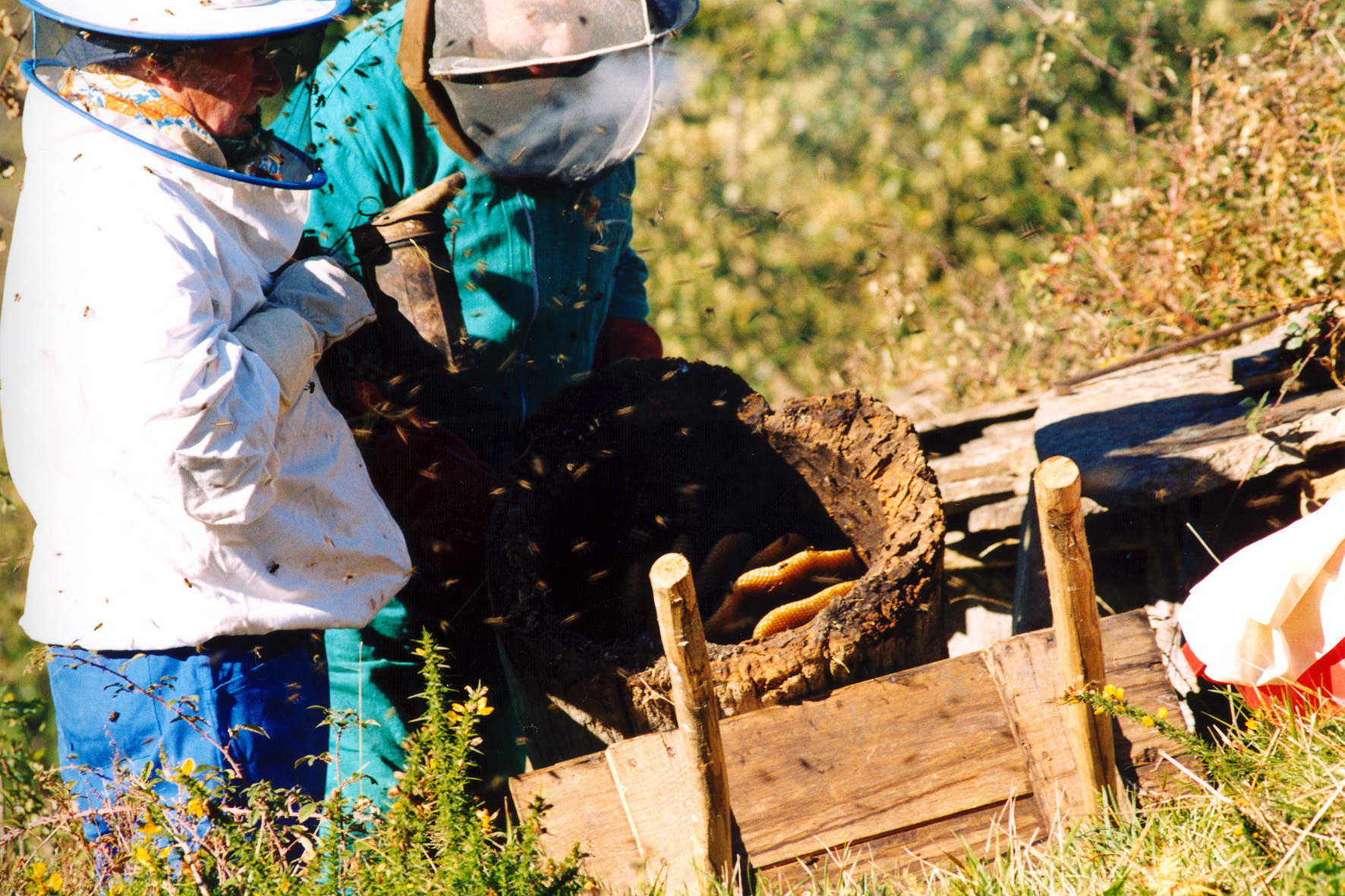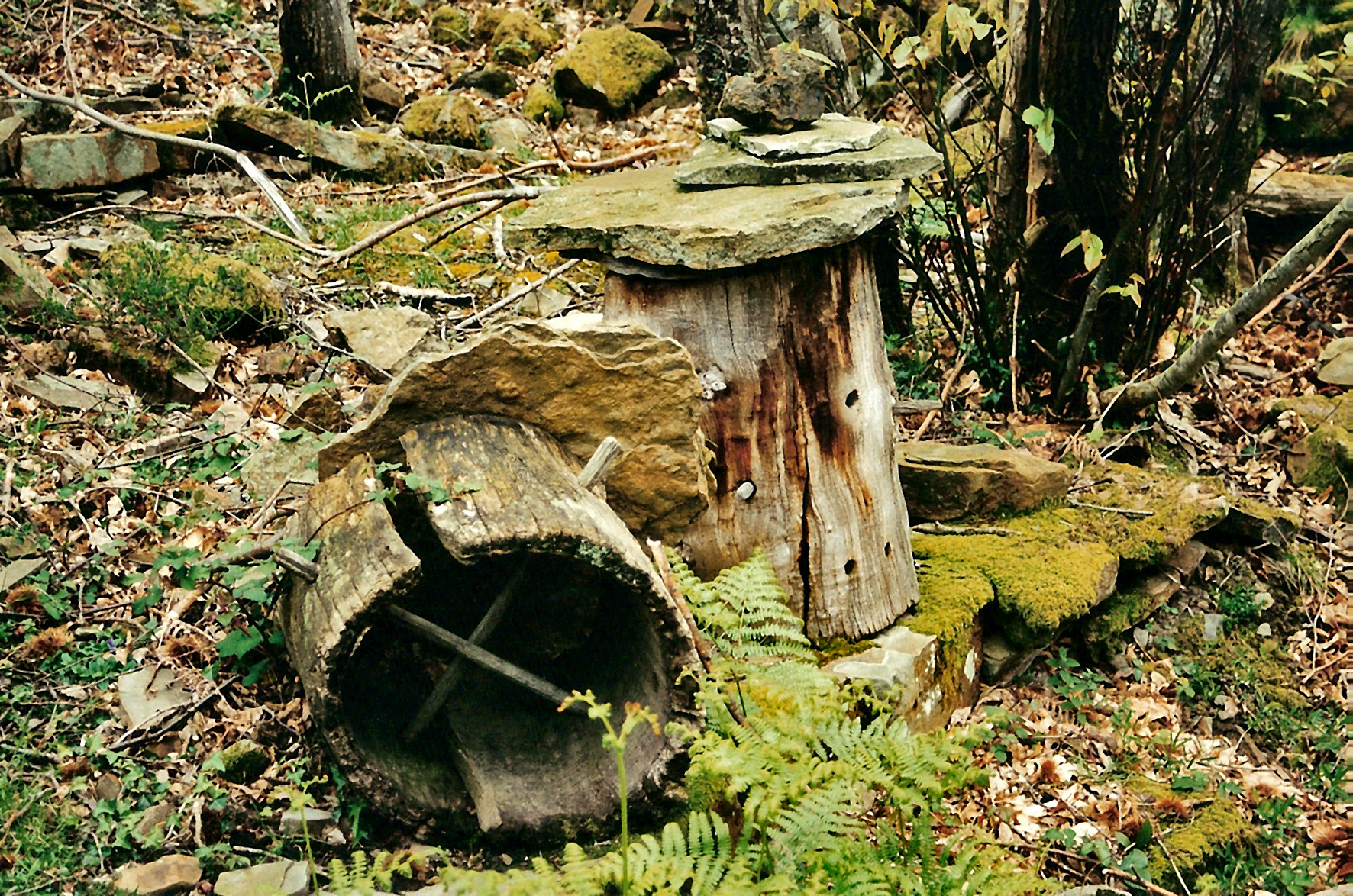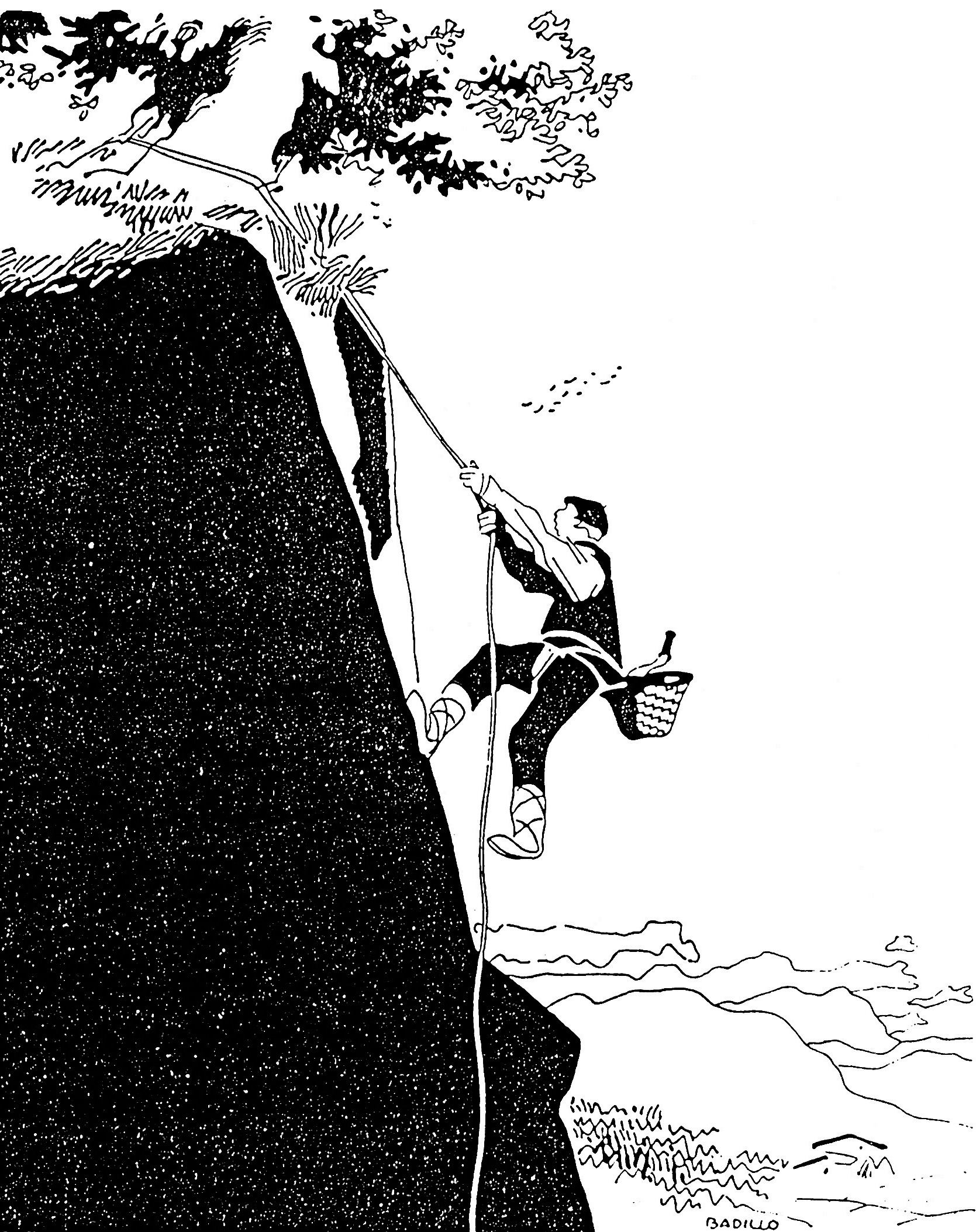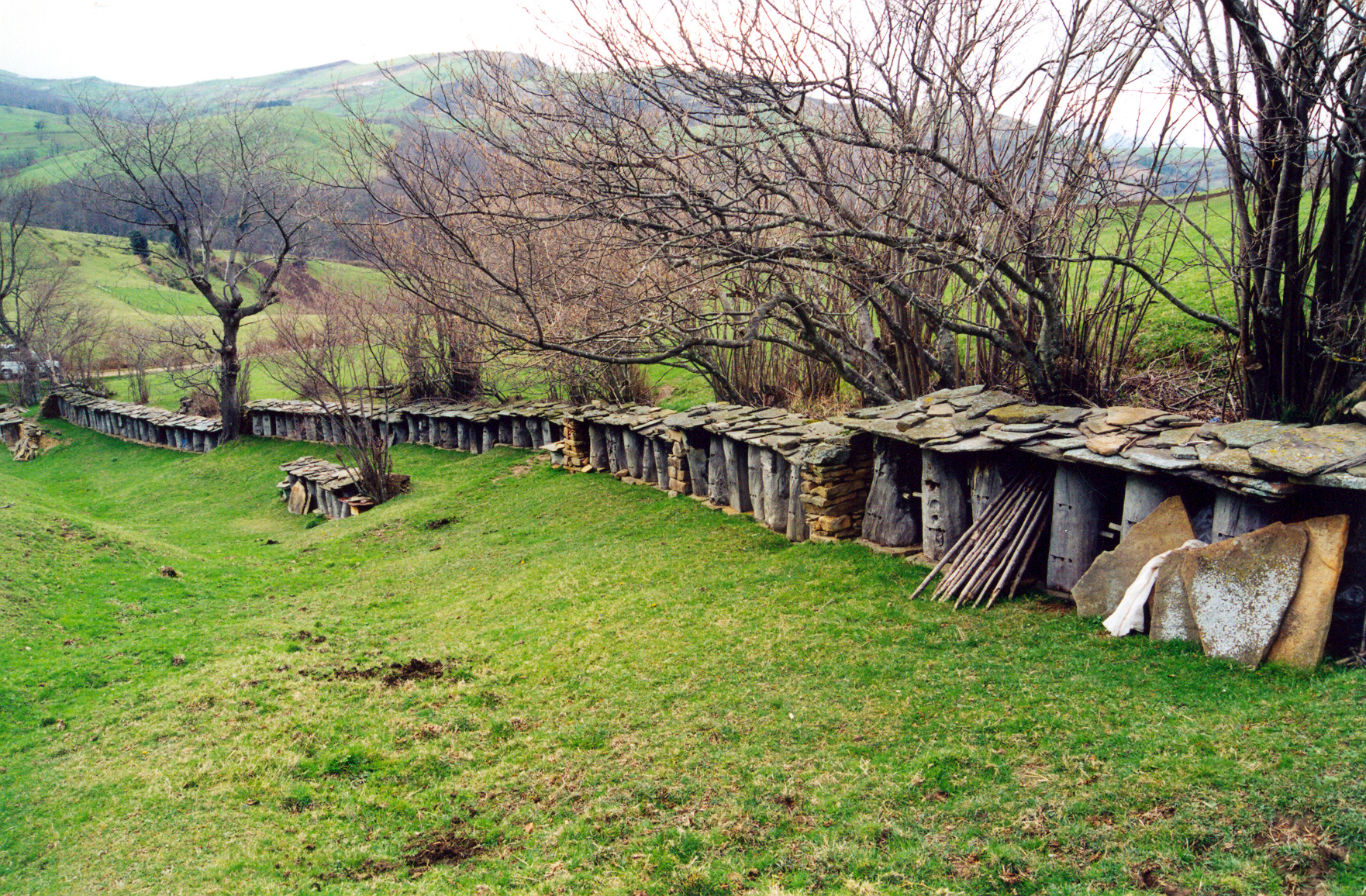Archives

Beekeepers in Carranza (Bizkaia), 2003. Miguel Sabino Díaz.
Folks have kept bees in pretty much all inland locations of our country, be it out of curiosity or by tradition. Joxe Mari Gabaro, native of Markina (Bizkaia) and named after the house where he was born, owned several beehives to harvest honey from them. His fellow citizens would have referred to him as an erle-maisua, a similar compound to ontzi-maisua ‘quartermaster’, formed from erle ‘bee, beehive’ and maisu ‘master’, literally meaning ‘bee-master’. (more…)
The tradition of collecting honey from combs —known as tástanas or tástanos— made by wild bees in caves and rock crevices was widespread in areas of the district of Las Encartaciones in Bizkaia. (more…)
The log hive, known locally as cepo, has since time immemorial and until barely a few decades ago been the ideal place to site a bee colony for beekeeping in Valley of Carranza apiaries. Fixed in a vertical position, as tradition dictates, this type of hive consisted of a dead or hollowed-out tree trunk on whose walls the bees were to build their honeycombs or tástanas. Sometimes the hive was built with timbers to solve shortage of tree logs. (more…)

Old chestnut log hives. Miguel Sabino Díaz.
In Carranza, up in the mountains of Ordunte, a spot known as Los Cepos Vinagre —The Vinegar Hives— in lands under Pando Council jurisdiction houses the remains of an ancient apiary, a real treasured asset of the local ethnographic heritage. (more…)



